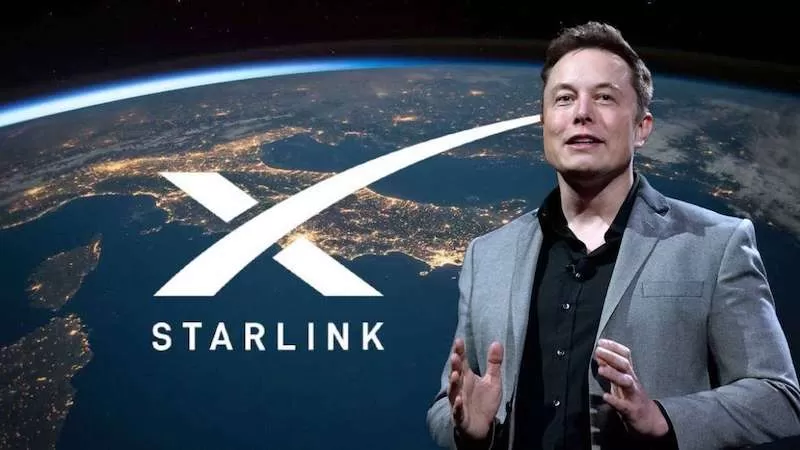The Future of Global Internet: Starlink
The internet has become a vital part of our lives. It connects us, informs us, and entertains us. But what if we could take it a step further? What if we could bring high-speed internet to every corner of the globe?
Enter Starlink, a project by SpaceX. Its mission is to build a satellite internet constellation that provides global coverage.

Starlink’s satellites are in Low Earth Orbit (LEO). This positioning reduces latency, providing faster internet speeds. It’s a game-changer for rural and remote areas where internet access is unreliable or non-existent.
But Starlink isn’t without competition. OneWeb, among others, is also vying for a piece of the global internet pie. This article will delve into the details of Starlink, its technology, and its place in the market.
We’ll also explore the latest Starlink launches, updates, and reviews. So, buckle up as we journey into the future of global internet with Starlink.
Starlink’s Mission for Global Connectivity
Starlink aims to revolutionize internet connectivity worldwide. The project envisions a world where everyone has access to high-speed internet, regardless of location. This mission is especially vital for rural and remote regions often left underserved by traditional internet providers.

By deploying thousands of small satellites in Low Earth Orbit (LEO), Starlink reduces latency and improves network speed. These satellites work together to blanket the globe with reliable internet coverage. This ambitious goal is designed to help bridge the digital divide, enabling economic growth and social development for previously isolated communities.
How Starlink is Changing the Internet Landscape
Starlink is transforming how the world accesses the internet. Traditional internet services often struggle with speed and coverage. Starlink, through its satellite network, offers an alternative that rivals conventional broadband.
This change is vital for regions with poor infrastructure. By offering fast and reliable internet, Starlink is opening new opportunities for education, work, and communication. It empowers communities to participate in the digital economy, fostering innovation and growth. Moreover, Starlink’s low-latency service caters to modern needs like online gaming and telemedicine, enhancing user experiences across the globe.
The Technology Behind Starlink
Starlink uses cutting-edge technology to deliver high-speed internet. Its satellites are equipped with advanced phased array antennas. These antennas ensure efficient communication with user terminals on Earth.
One standout feature is the ion propulsion system, which maintains satellite position. This system also aids in deorbiting at the end of each satellite’s life span. The network’s success hinges on several key technologies:
- Phased array antennas for efficient signal transmission.
- Ion propulsion for satellite positioning and deorbiting.
- Low Earth Orbit (LEO) placement for reduced latency.
The innovation in Starlink’s technology is crucial for its global reach.
Starlink Satellite 3D Models and Their Importance
Starlink satellite 3D models play an essential role in understanding this technology. These models offer insights into design and functionality for educational and training purposes. They are also valuable for simulation and planning future missions.
By studying these models, engineers and scientists can make informed decisions. This enhances the development and deployment of satellite networks. Through visualization, we grasp Starlink’s impressive engineering feats.
Starlink’s Latest Launches and Future Missions
Starlink continues to expand its satellite constellation with regular launches. Each successful mission adds more satellites, improving coverage and connection quality. The latest launches are crucial for achieving global internet access.
Looking ahead, Starlink plans to launch thousands more satellites. These future missions aim to enhance network stability and decrease latency further. This ambitious expansion positions Starlink as a leader in satellite internet services.
Starlink vs. OneWeb: The Battle for the Skies
Starlink and OneWeb are major players in the satellite internet market. Both companies aim to provide global internet coverage through Low Earth Orbit constellations. Despite shared goals, they employ differing strategies and technologies.
Competition drives innovation in this growing field. While Starlink focuses on speed and latency improvements, OneWeb emphasizes partnerships and regulatory compliance. This rivalry pushes both companies to optimize services, benefiting consumers worldwide.
Starlink Speed: How Fast is the Future of Internet?
Starlink delivers impressive internet speeds. Users report download speeds ranging from 50 Mbps to over 150 Mbps. These speeds rival many traditional broadband connections.
The low-latency network is a key advantage of Starlink. By reducing signal delays, Starlink supports smooth streaming and online gaming. As more satellites launch, speed improvements continue.
User Experience: Starlink Review and Windows Application
Many customers praise Starlink for its reliable service and simplicity. The easy setup process is a standout feature. Users appreciate the straightforward installation and intuitive interface.
To enhance user experience, Starlink is developing a Windows application. This app aims to streamline connectivity and system updates. It promises to further simplify managing network settings.
Starlink for Business: Opportunities and Considerations
Starlink offers businesses a new way to connect. Its high-speed satellite internet serves remote locations well. This can be vital for businesses operating in rural areas without reliable infrastructure.
However, there are considerations to weigh. Cost can be a factor for larger companies needing multiple connections. Businesses must assess whether Starlink’s offerings align with their needs. Despite this, the potential for increased connectivity and flexibility is significant.
Mounting the Future: Starlink Mounts and Installation
Installing Starlink is designed to be user-friendly. Starlink mounts cater to different needs, ensuring a seamless setup. Whether it’s for rooftops or ground installations, there is a suitable option available.
The process involves positioning the dish for optimal sky visibility. This ensures a stable and high-quality connection. Starlink provides detailed instructions, making it accessible for users of all skill levels. With the right mount, users can take full advantage of Starlink’s offerings.
Keeping Up with Starlink: Updates and Developments
Starlink is ever-evolving, with continual improvements to its network and hardware. Frequent Starlink updates reflect its commitment to offering reliable and robust internet services across the globe.
Significant developments have been made in satellite design and performance. These enhancements optimize service quality and expand coverage. Users can expect regular updates that improve user experience and connectivity, ensuring that Starlink remains at the forefront of satellite internet technology.
Conclusion: What the Future Holds for Starlink and Global Internet
Starlink is poised to transform global internet access, especially in underserved areas. With its growing satellite constellation, it aims to provide fast, reliable connectivity worldwide.
As technology advances, Starlink’s potential impact increases. It could bridge the digital divide, support economic growth, and foster innovation. As Starlink continues its expansion, it holds the promise of revolutionizing how we connect and communicate on a global scale.



